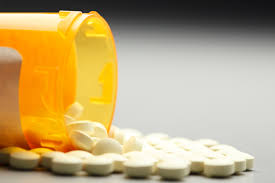
Understanding the Complexities of Drugs: Impact, Challenges, and Solutions
The Impact of Drugs on Society
Drugs have been a persistent issue in society, affecting individuals, families, and communities in various ways. The use and abuse of drugs can have far-reaching consequences that extend beyond the individual user.
One of the most significant impacts of drugs is on public health. Substance abuse can lead to a range of health problems, including addiction, overdose, and infectious diseases such as HIV/AIDS and hepatitis. Drug-related health issues not only strain healthcare systems but also place a heavy burden on families and communities.
Furthermore, drugs can have detrimental effects on social behavior and relationships. Substance abuse often leads to impaired judgment, erratic behavior, and violence, which can disrupt families and communities. The ripple effects of drug addiction can result in broken homes, strained relationships, and social instability.
Economically, the impact of drugs is substantial. The costs associated with drug addiction include healthcare expenses, law enforcement efforts, and lost productivity in the workforce. Drug-related crimes further burden legal systems and contribute to societal costs that are felt by all members of society.
Prevention and intervention strategies play a crucial role in addressing the impact of drugs on society. Education about the dangers of substance abuse, access to treatment programs, and support for individuals struggling with addiction are essential components in mitigating the negative effects of drug use.
In conclusion, the impact of drugs on society is multifaceted and complex. By understanding the consequences of drug abuse and implementing effective strategies to address them, we can work towards building healthier communities and promoting overall well-being for all individuals.
Common Questions About Drugs: Slang, Examples, and Usage
- What is ❄ drug slang?
- What are 10 examples of drugs?
- What are the 4 drugs?
- What are the 7 drugs?
- What are 10 commonly used drugs?
- What are the 10 most used drugs?
- What are 3 examples of common drugs?
- What is a list of drugs?
What is ❄ drug slang?
Drug slang refers to the informal language and terminology used to describe various drugs, often as a way to conceal their true identities in conversations or written communications. ❄ Drug slang can encompass a wide range of terms, from common street names for drugs like cocaine or methamphetamine to more obscure code words used within specific communities or circles. Understanding drug slang is important for individuals working in law enforcement, healthcare, or drug prevention fields as it helps identify and address substance abuse issues effectively.
What are 10 examples of drugs?
There are numerous types of drugs that serve various purposes, from medication to recreational use. Ten examples of drugs include common over-the-counter medications such as aspirin and ibuprofen for pain relief, prescription medications like antibiotics and antidepressants for specific medical conditions, illicit substances like cocaine and heroin that are known for their addictive properties, as well as recreational drugs such as marijuana and ecstasy that are used for their psychoactive effects. Each type of drug has its own set of effects and potential risks, highlighting the importance of understanding the distinctions between them for safe and informed use.
What are the 4 drugs?
The question “What are the 4 drugs?” is quite broad and can refer to a variety of substances. In a general context, the term “4 drugs” may not have a specific or universally recognized meaning. It could potentially allude to the classification of drugs into different categories or types, such as stimulants, depressants, hallucinogens, and opioids. It is important to note that drug classification and terminology can vary based on different contexts and purposes, including medical, legal, and recreational settings. For accurate information on specific drugs and their classifications, it is recommended to consult reliable sources or healthcare professionals.
What are the 7 drugs?
The question “What are the 7 drugs?” is quite broad and may refer to different categories or types of drugs. In general, drugs can be classified into various categories based on their effects and purposes, such as stimulants, depressants, hallucinogens, opioids, cannabinoids, inhalants, and anabolic steroids. Each category includes specific drugs that have distinct effects on the body and mind. It is important to note that the use of any drug should be approached with caution and under the guidance of healthcare professionals to ensure safety and well-being.
What are 10 commonly used drugs?
There are various commonly used drugs that individuals may encounter in different contexts. Some of the 10 commonly used drugs include alcohol, marijuana, tobacco, cocaine, heroin, methamphetamine, ecstasy (MDMA), prescription opioids (such as oxycodone and hydrocodone), benzodiazepines (like Xanax and Valium), and hallucinogens (such as LSD and psilocybin mushrooms). These substances have different effects on the body and mind, and their misuse can lead to a range of health and social consequences. It is important for individuals to be informed about the risks associated with these commonly used drugs and seek help if they or someone they know is struggling with substance abuse.
What are the 10 most used drugs?
The question “What are the 10 most used drugs?” is a common inquiry that sheds light on the prevalence of drug consumption in society. The answer to this question typically includes substances such as alcohol, tobacco, cannabis, prescription medications (e.g., opioids, benzodiazepines), stimulants (e.g., cocaine, amphetamines), hallucinogens (e.g., LSD, ecstasy), and sedatives. Understanding the popularity and widespread use of these drugs underscores the importance of education, prevention, and intervention efforts to address substance abuse issues and promote healthier lifestyles among individuals and communities.
What are 3 examples of common drugs?
There are numerous common drugs that are widely used and can have significant effects on individuals. Three examples of commonly used drugs include alcohol, nicotine, and caffeine. Alcohol is a legal substance that is consumed for its intoxicating effects, but excessive use can lead to addiction and health problems. Nicotine, found in tobacco products, is a highly addictive stimulant that is associated with numerous health risks, including lung disease and heart problems. Caffeine, found in coffee, tea, and energy drinks, is a stimulant that many people use to increase alertness and combat fatigue, but excessive consumption can lead to insomnia and other health issues. These three examples highlight the prevalence of drug use in society and the importance of understanding their potential impacts on health and well-being.
What is a list of drugs?
A list of drugs typically refers to a compilation of various substances that have pharmacological effects on the body. This can include prescription medications, over-the-counter drugs, and illicit substances such as narcotics, stimulants, depressants, hallucinogens, and more. Each drug on the list may have different uses, side effects, and potential risks associated with its consumption. It is essential for individuals to be informed about the drugs they are taking and to consult healthcare professionals for guidance on their proper use and potential interactions with other medications.


